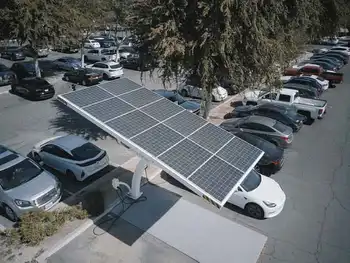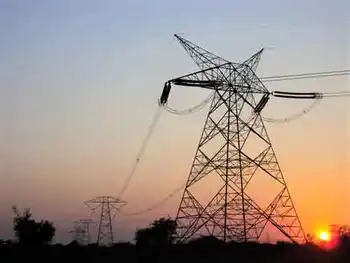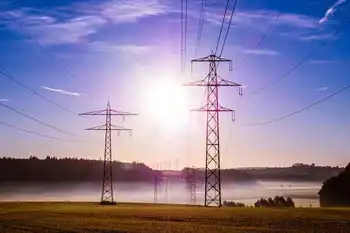Twin States Clean Energy Link connects New England to Hydro-Quebec via a 1,200 MW transmission line, DOE-backed capacity, underground segments, existing corridors, boosting renewable energy reliability across Vermont and New Hampshire with cross-border grid flexibility.
Key Points
DOE-backed 1,200 MW line linking Hydro-Quebec to New England, adding clean capacity with underground routes.
✅ 1,200 MW cross-border capacity for the New England grid
✅ Uses existing corridors; underground in VT and northern NH
✅ DOE capacity contract lowers risk and spurs investment
A proposal to build a new transmission line to connect New England with Canadian hydropower is one step closer to reality.
The U.S. Department of Energy announced Monday that it has selected the Twin States Clean Energy Link as one of three transmission projects that will be part of its $1.3 billion cross-border transmission initiative to add capacity to the grid.
WBUR is a nonprofit news organization. Our coverage relies on your financial support. If you value articles like the one you're reading right now, give today.
Twin States is a proposal from National Grid, a utility company that serves Massachusetts, New York, and Rhode Island, and also owns transmission in England and Wales as the region advances projects like the Scotland-to-England subsea link that expand renewable flows, and the non-profit Citizens Energy Corporation.
The transmission line would connect New England with power from Hydro-Quebec, moving into the United States from Canada in Northern Vermont and crossing into New Hampshire near Dalton. It would run through parts of Grafton, Merrimack, and Hillsborough counties, routing through a substation in Dunbarton and ending at a proposed new substation in Londonderry. (Here's a map of the Twin States proposal.)
The federal funding will allow the U.S. Department of Energy to purchase capacity on the planned transmission line, which officials say reduces the risk for other investors and can help encourage others to purchase capacity.
The project has gotten support from local officials in Vermont and New Hampshire, but there are still hurdles to cross. The contract negotiation process is beginning, National Grid said, and the proposal still needs approvals from regulators before construction could begin.
First Nations communities in Canada have opposed transmission lines connecting Hydro-Quebec with New England in the past, and the company has faced scrutiny from environmental groups.
What would Twin States look like?
Transmission projects, like the failed Northern Pass proposal, have been controversial in New England, though the Great Northern Transmission Line progressed in Minnesota.
But Reihaneh Irani-Famili, vice president of capital delivery, project management and construction at National Grid, said this one is different because the developers listened to community concerns before planning the project.
“They did not want new corridors of infrastructure, so we made sure that we're using existing right of way,” she said. “They did not want the visual impact and some of the newer corridors of infrastructure, we're making sure we're undergrounding portions of the line.”
In Vermont and northern New Hampshire, the transmission lines would be buried underground along state roads. South of Littleton, they would be located within existing transmission corridors.
The developers say the lines could provide 1,200 megawatts of transmission capacity. The project would have the ability to carry electricity from hydro facilities in Quebec to New England, and would also be able to bring electricity from New England into Quebec, a step toward broader macrogrid connectivity across regions.
“Those hydro dams become giant green batteries for the region, and they hold that water until we need the electrons,” Irani-Famili said. “So if you think about our energy system not as one that sees borders, but one that sees resources, this is connecting the Quebec resources to the New England resources and helping all of us get into that cleaner energy future with a lot less build than we otherwise would have.”
Irani-Famili says the transmission line could help facilitate more clean energy resources like offshore wind coming online. In a report released last week by New Hampshire’s Department of Energy, authors said importing Canadian hydropower could be one of the most cost-effective ways to move away from fossil fuels on the electric grid.
National Grid estimates the project will help save energy customers $8.3 billion in its first 12 years. The developers are constructing a $260 million “community benefits plan” that would take some profits from the transmission line and give that money back to communities that host the transmission lines and environmental justice communities in New England.
Related News












